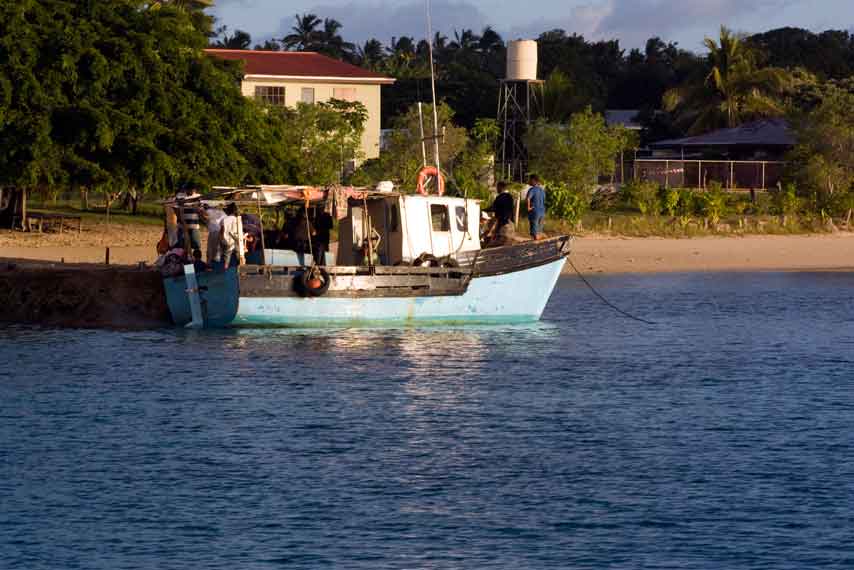
Fishing Boat
Malo e lelei is how you say hello in Tonga, and it seems nearly every person in this island republic wants to do just that. A few hundred years after Cook named these the Friendly Islands, not much has changed. At our boat briefing, Raymond shook his head when we asked about keys to lock the boat. “You leave the boat or snorkel for two hours or two days, no one will touch anything,” he assured us.
At the Sunsail base, we left our bags piled on the deck when we went shopping for last minute provisions. Not even the neighborhood dogs gave them a sniff. In a country where most of the islands don’t have electricity and where water is collected in cisterns fed by tin-roof collection systems, visitors can anchor their expensive yachts just off shore and not worry about a thing.
Amazing.
But so is nearly everything we’ve seen in this spectacular cruising ground.
Navigation couldn’t be simpler. If the water is deep blue, and most of it is, you’re good to go. If it’s shimmering lighter shade of blue, or a brownish yellow, pick a different direction and avoid the reef. It’s about that simple. Vava’u’s only navigation buoys are all in the harbor at Neiafu, and there are only three of them, all within about 50 yards of each other. After that, well you’re on you own.
And we were. As we sailed between islands we saw few if any other sailboats and only a sprinkling of the low-slung local fishing boats that work these fish-rich waters. On one island, Ben, a local waterman, told us the fish are abundant. Unfortunately, customer are scarce. He does most of his fishing to put food on the table for family or villagers rather than paying customers. A rough lesson in supply and demand, or the lack there of.
Still, he wasn’t complaining, and apparently had some good fortune in the marketplace, judging by the new Yamaha engine on his 20-year-old pine fishing boat.







